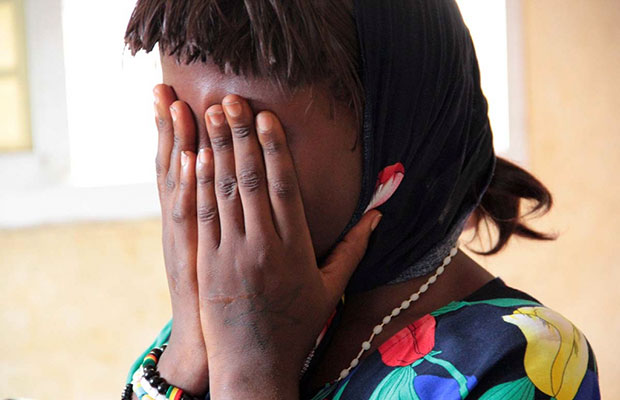
Hope and Refuge for At-Risk Girls in Sierra Leone
Young Aminata has inherited so much from her grandmother and mother: her expressive eyes, the shape of her face, her quiet manner. But she has also inherited something else — something she isn’t proud of, yet sees no way of escaping: a dehumanizing profession that provides barely enough money to survive, trapping her in a cycle of fear and despair.
“She works the streets at night, searching for customers who pay less than $2,” explains Father Jorge Crisafulli, director of Don Bosco Fambul in Freetown, Sierra Leone. “It’s the only way she knows how to feed herself, just as her mother and grandmother did. Unfortunately, opportunities for our youth — especially young women and girls — remain dismal after decades of civil war and economic decline.”
Indeed, Sierra Leone remains one of the world’s poorest countries, with more than 60 percent of the population living on less than $1.25 per day. Young people, especially, face significant challenges in accessing education: with too few teachers, and school buildings destroyed in the war, resources are thin. And persistently high illiteracy rates mean that an estimated 70 percent of Sierra Leone’s youth are un- or under-employed. Competition for the few available jobs is therefore fierce — and, far too often, futile.
“Gender inequality is another major issue,” Fr. Jorge explains. “Fewer than 10 percent of women in Sierra Leone have completed high school.” Fr. Jorge and his staff are renowned in Freetown for their unwavering work on behalf of homeless, trafficked and imprisoned youth — as well as for their ministry to Ebola orphans during the 2014 epidemic. This past September, in response to what he observed as a growing crisis, Fr. Jorge launched a new program called the “Refuge for Girls,” where street workers can access the resources they need to begin a new life.
“We really need this kind of support,” says Augusta, a young woman who, like Aminata, saw little choice but to sell her services in order to survive. “It’s a horrifying existence, filled with fear and loathing, and surrounded by alcohol and drugs. We are often beaten and robbed. And we’re hungry and sick. Worst of all, we are invisible, less than trash.”
Therefore, when Augusta first learned of the Refuge for Girls, she ran to its doorstep. “So many of my friends were dying of illness,” she recalls. “I didn’t want that to happen to me. I wanted something better for my life. For the first time ever, the Refuge for Girls helped me see how that might be possible.”
There, Augusta discovered a safe and welcoming shelter, medical care, nutritious meals, trauma counseling and the opportunity to learn new skills. Today, she runs her own catering business and works alongside shelter staff to convince more young women, like Aminata, to follow her lead.
“Aminata is skeptical right now,” Fr. Jorge explains. “She doesn’t yet believe in her heart that something better awaits. But we are getting closer.”
Augusta agrees. “She is used to life on the streets; it offers her a sense of familiarity even as it crushes her. I think, the more she sees others who have turned their lives around, the more that hope will flourish in her heart.”
Our mission helps bridge the gap for at-risk girls. What’s your mission?

